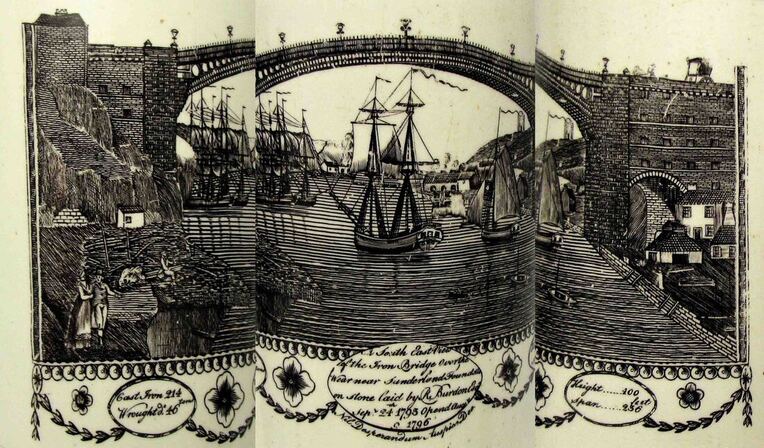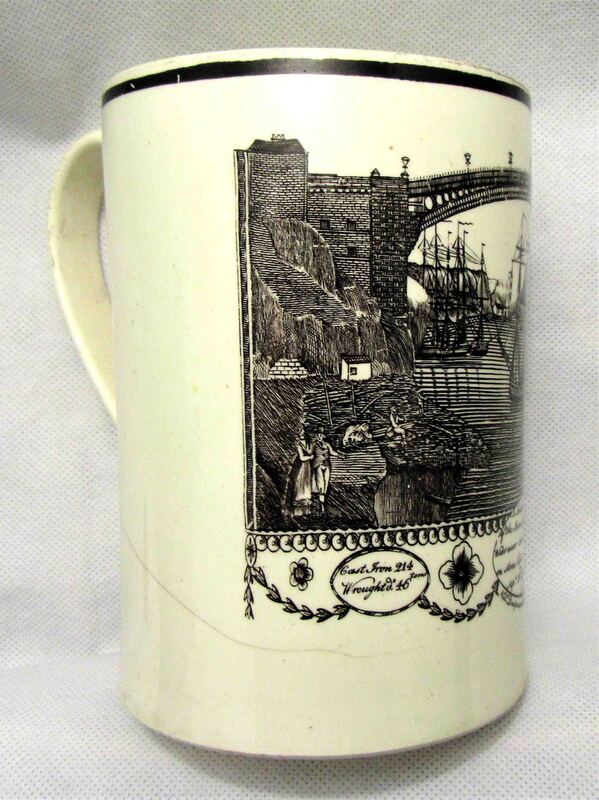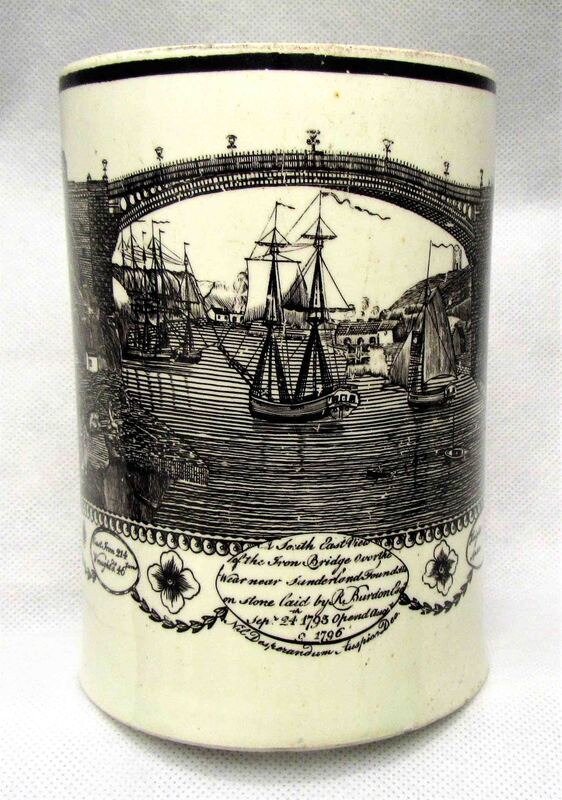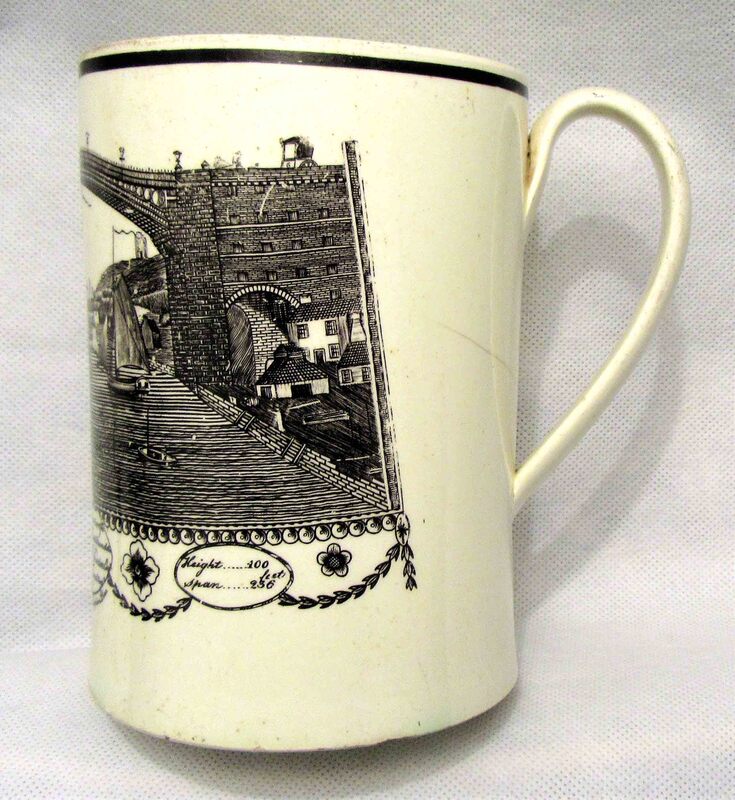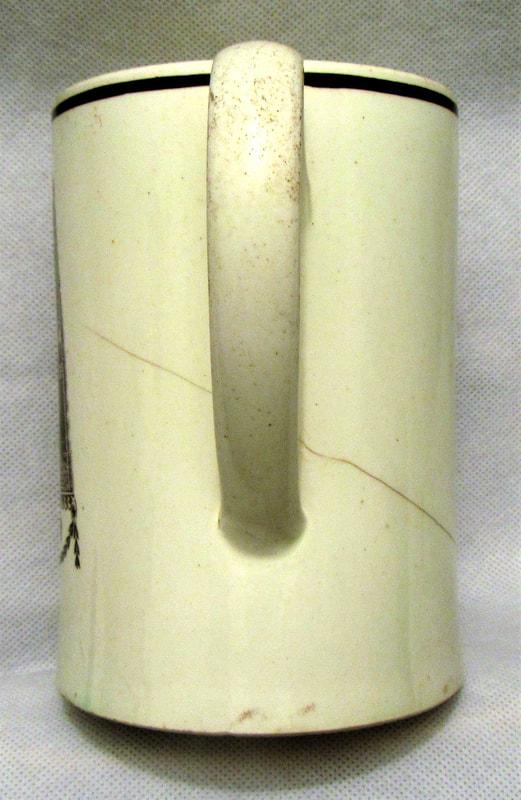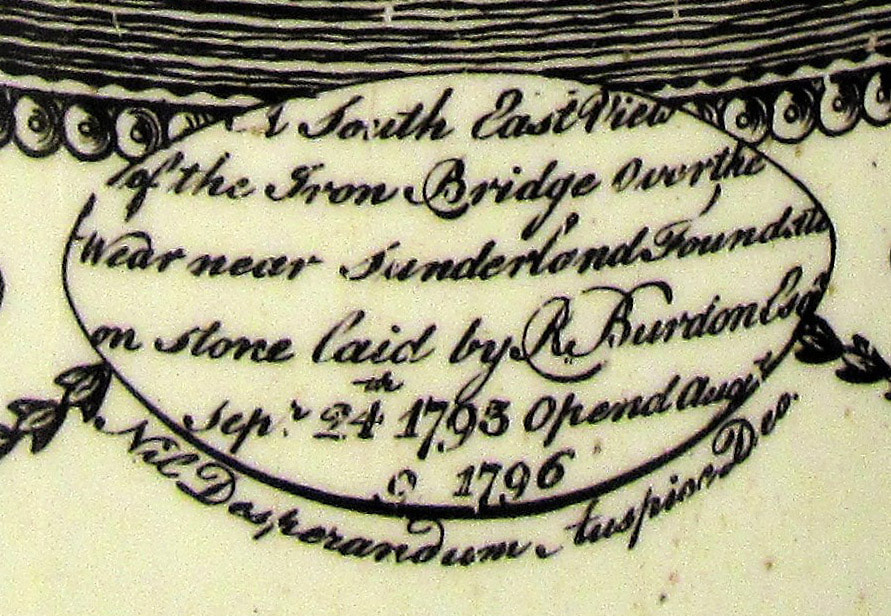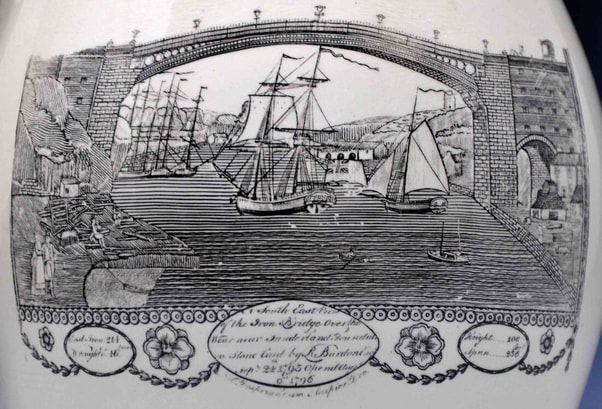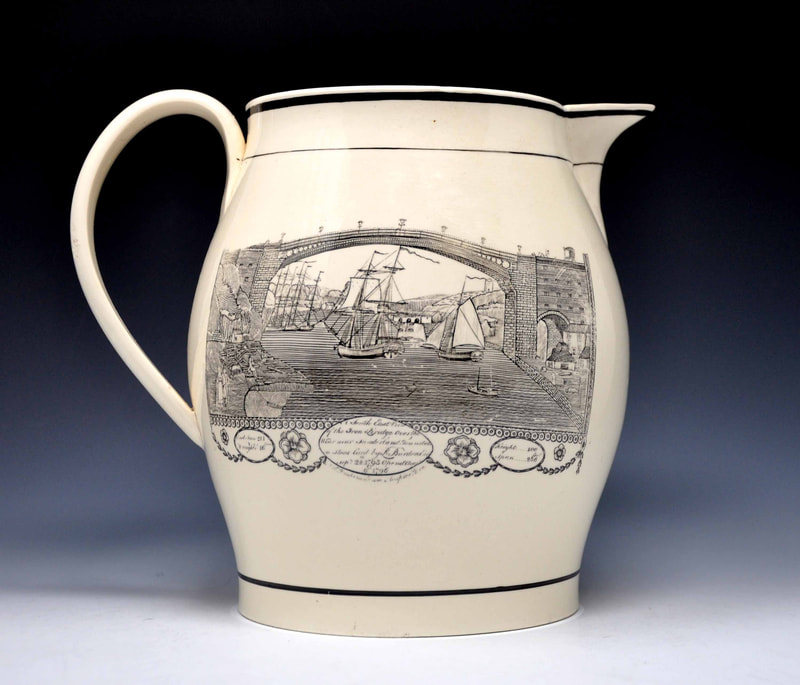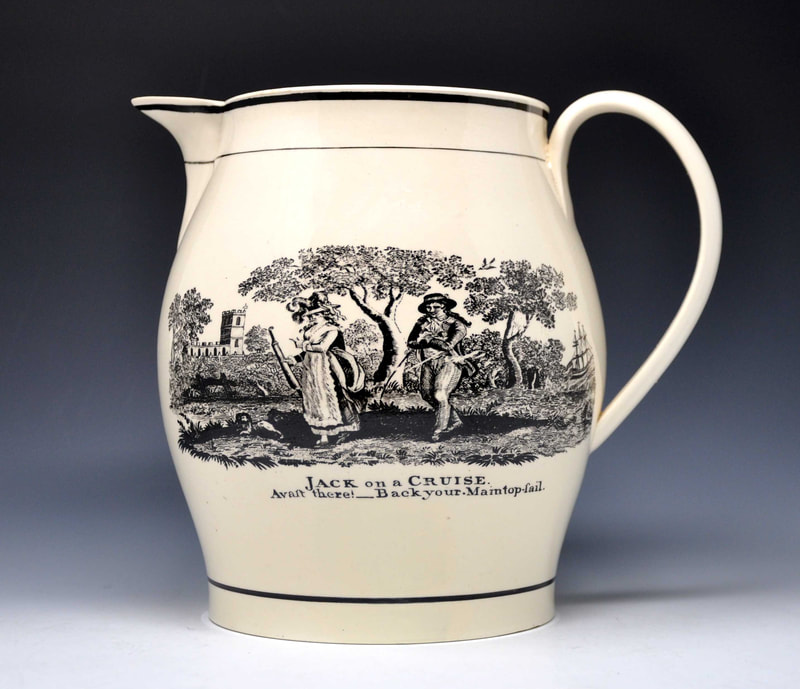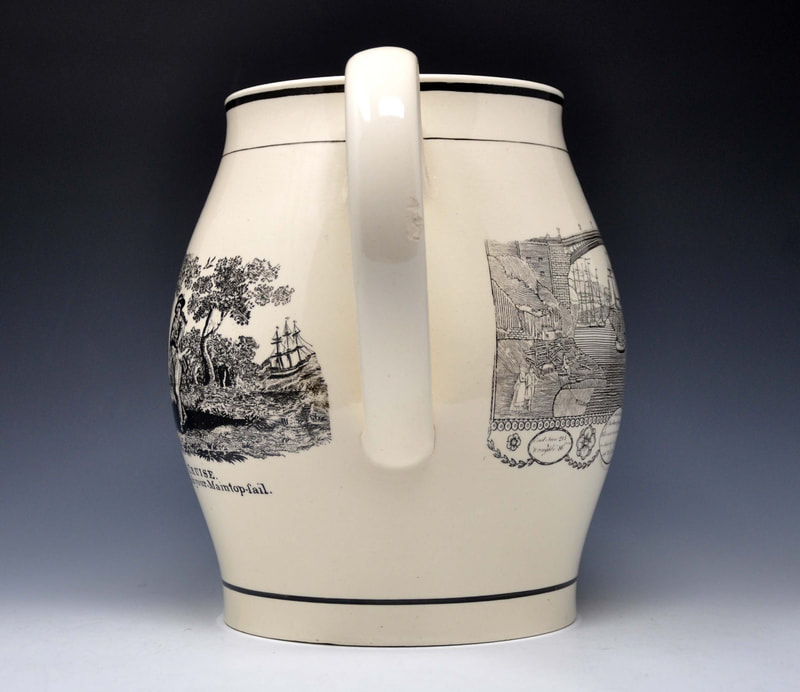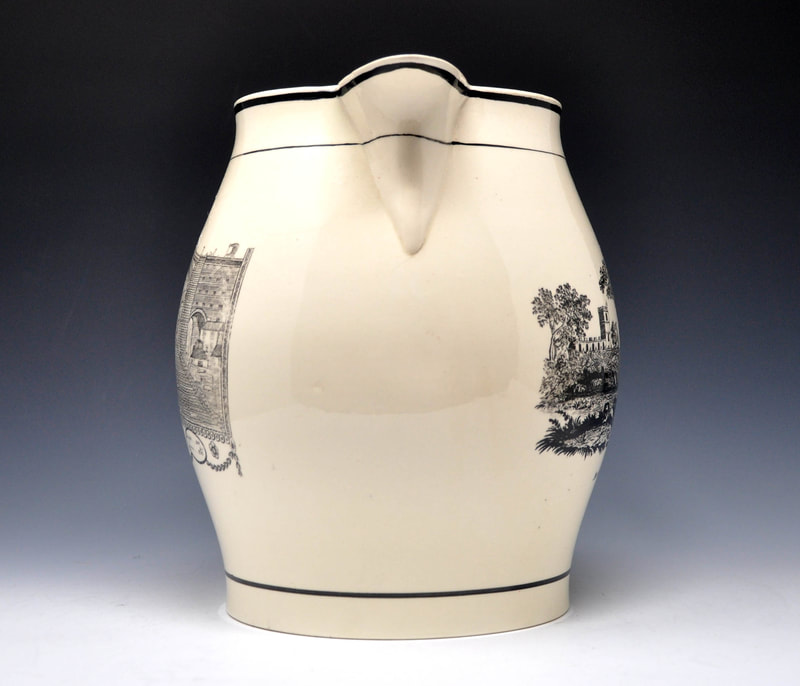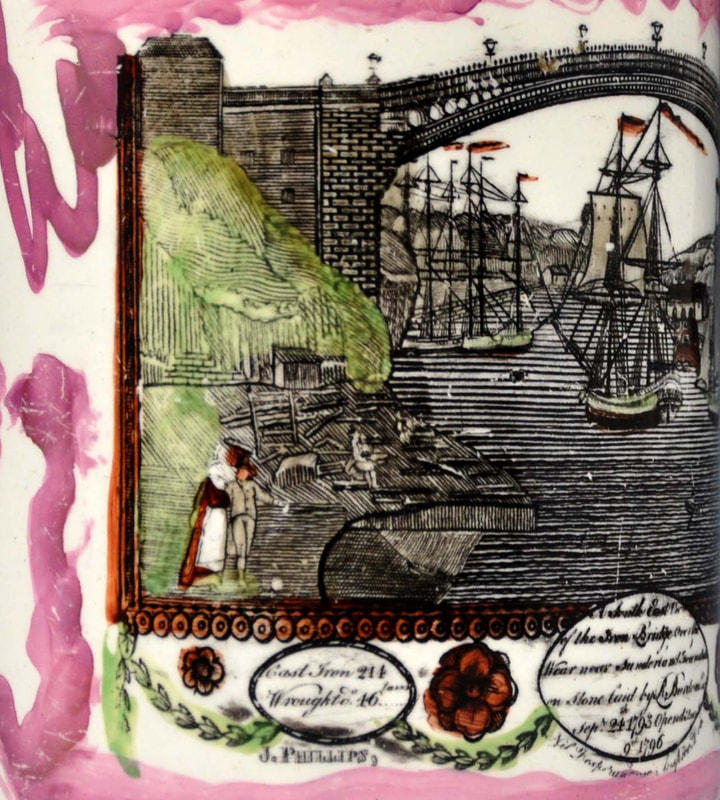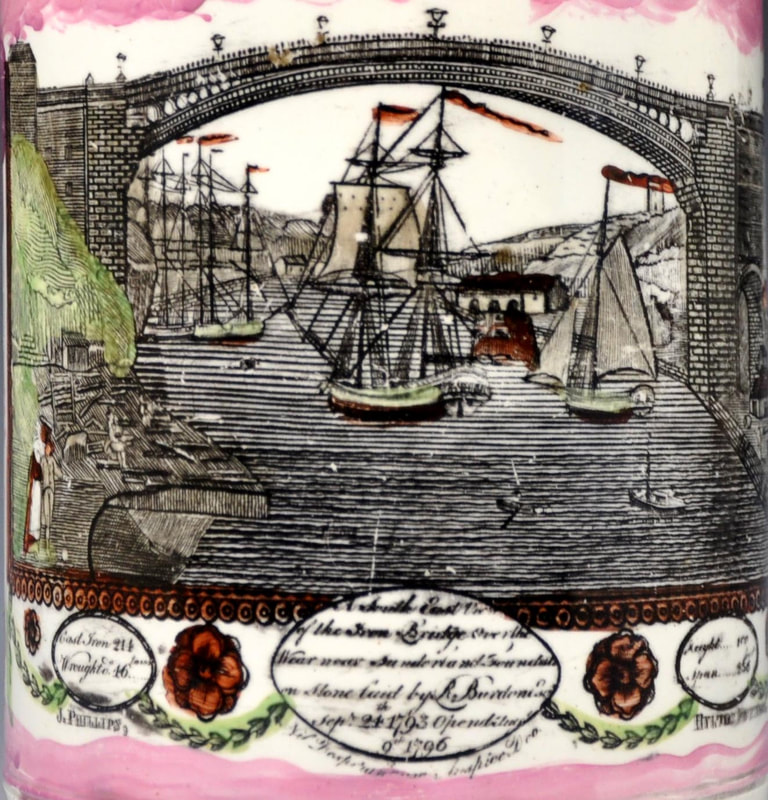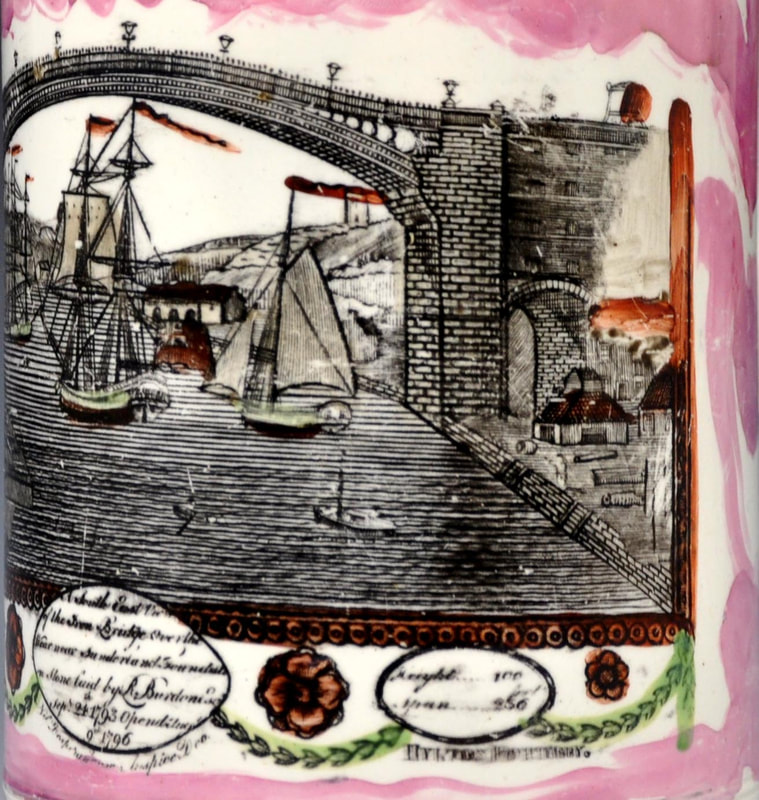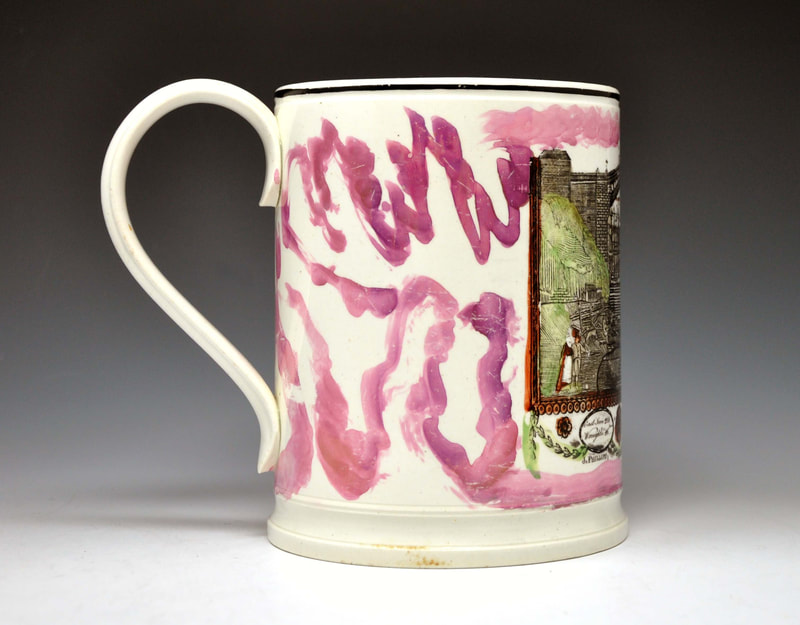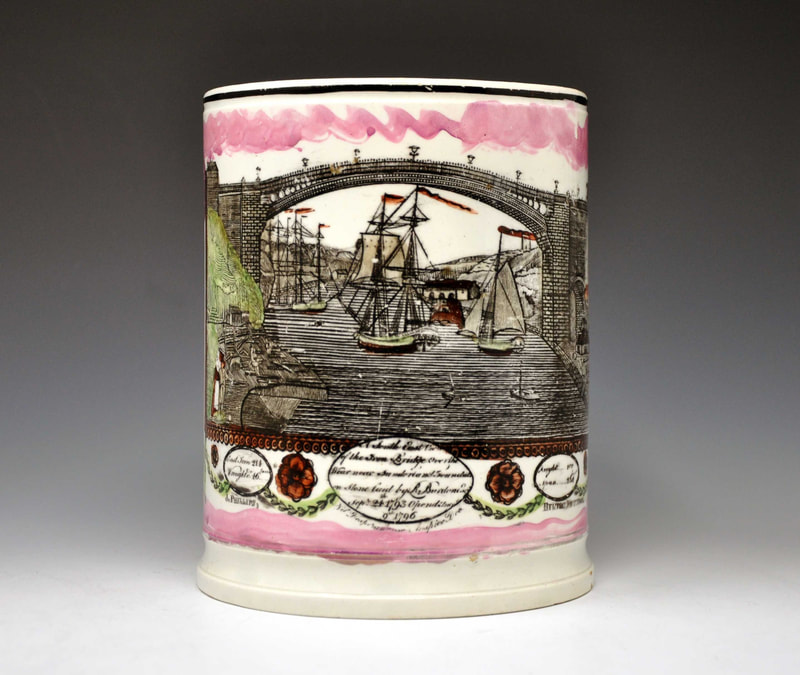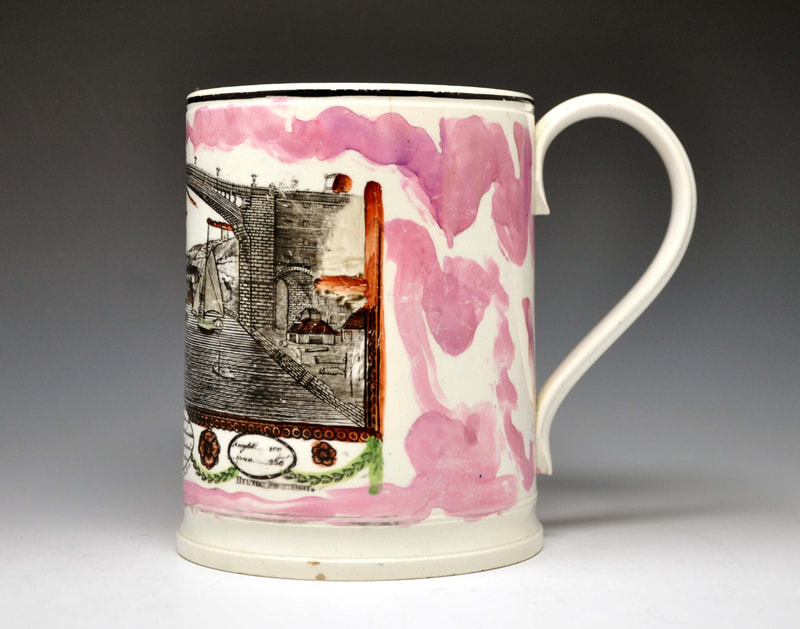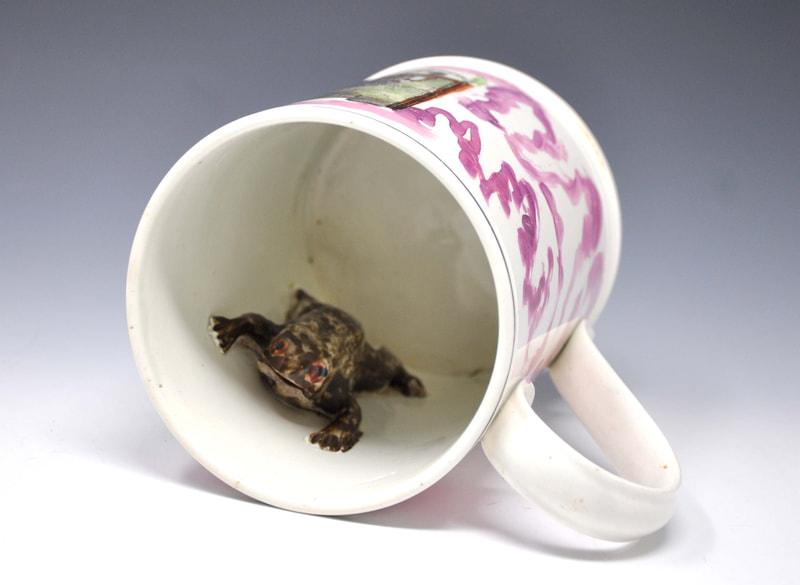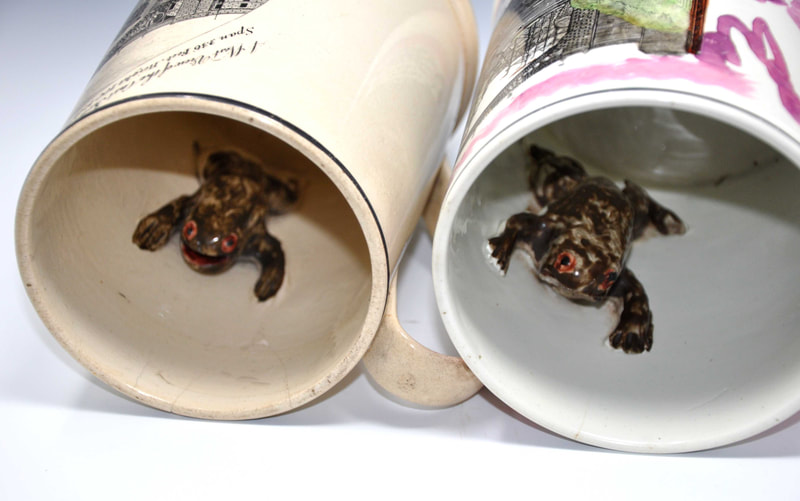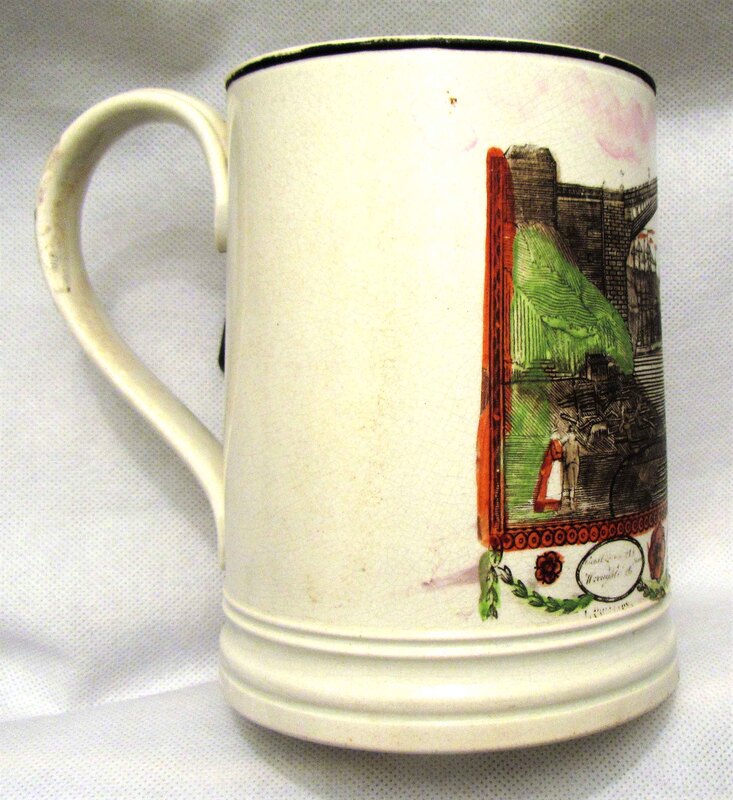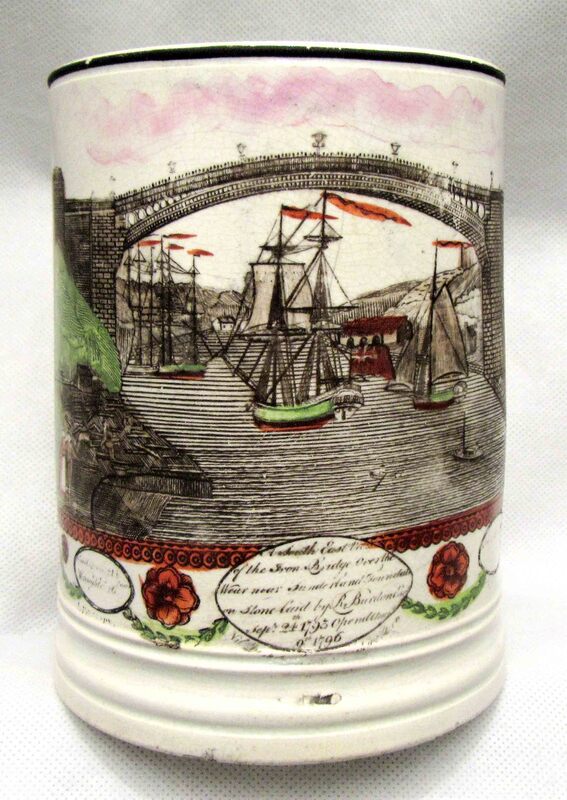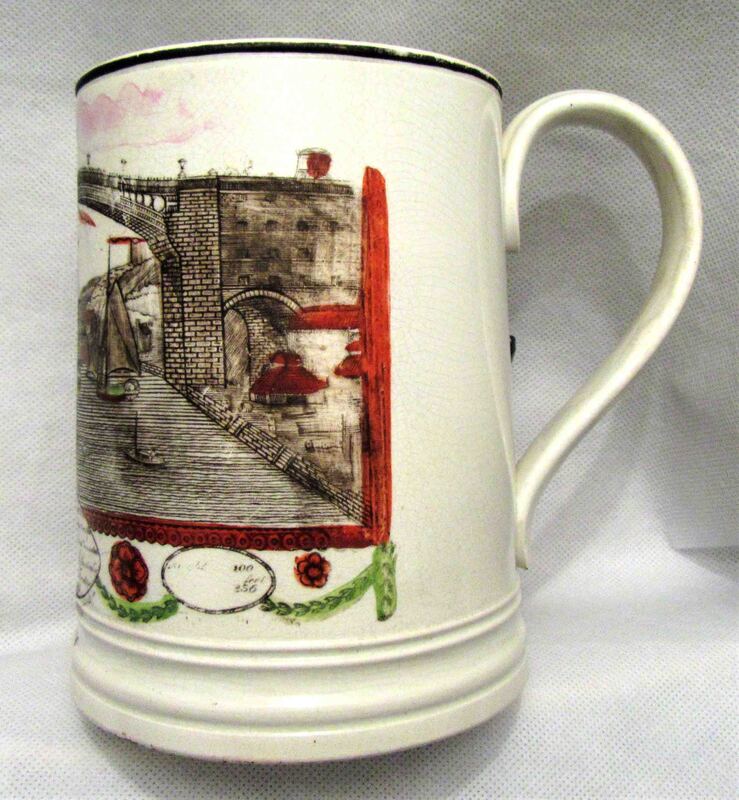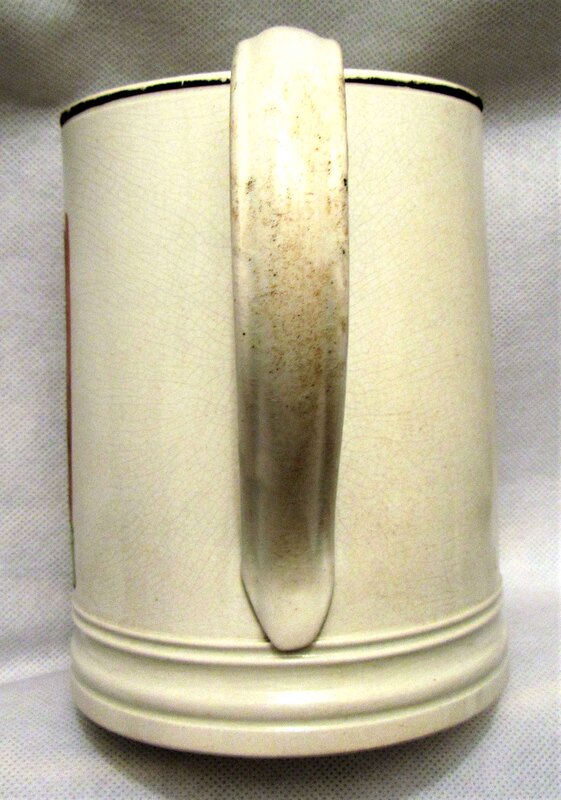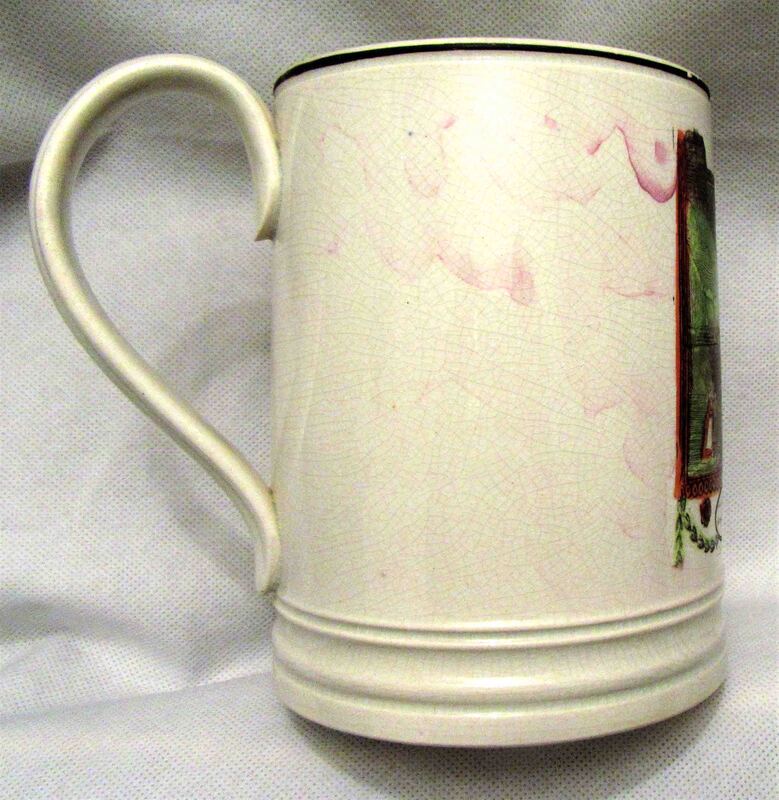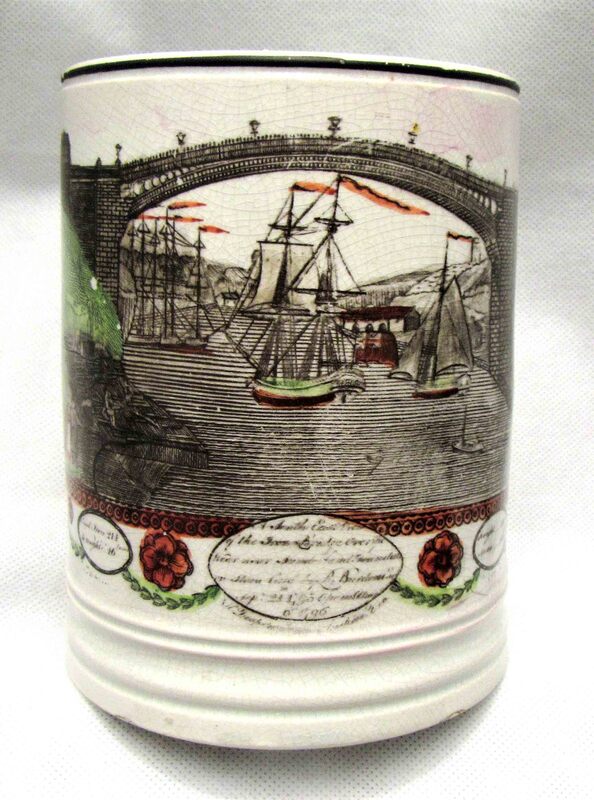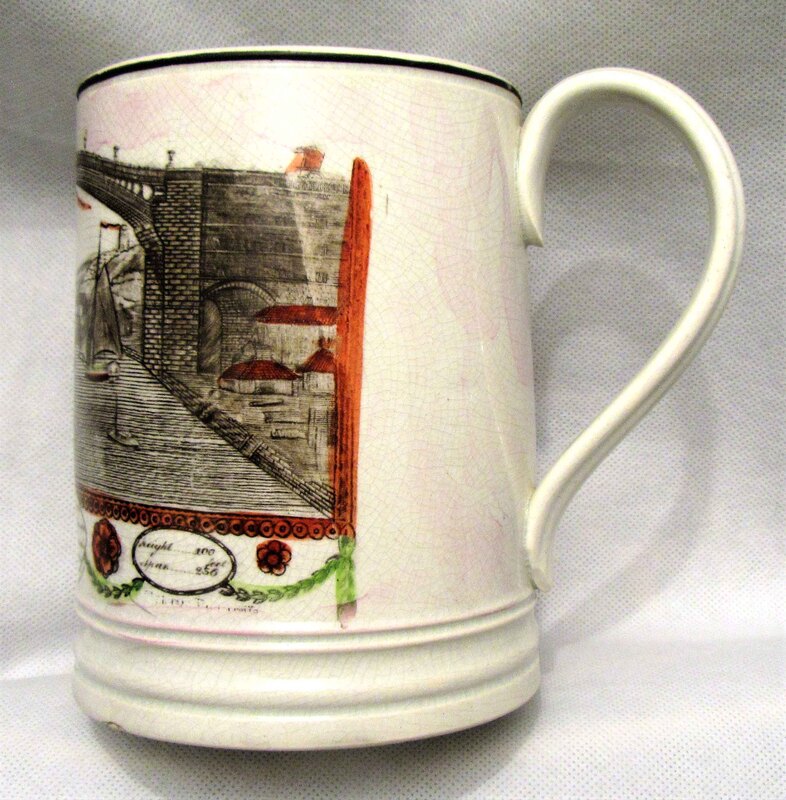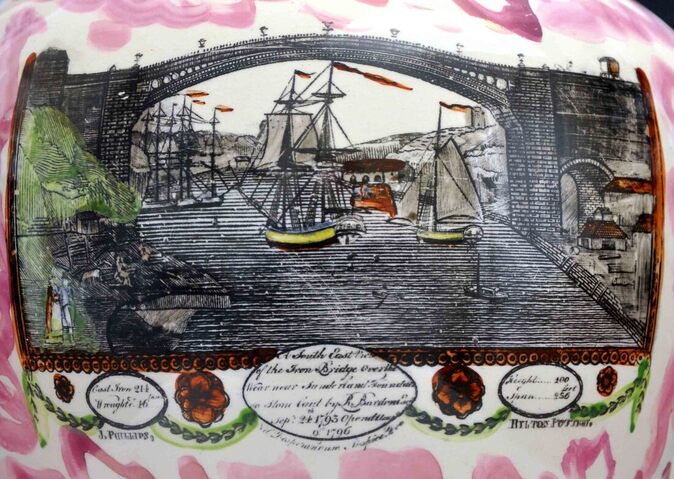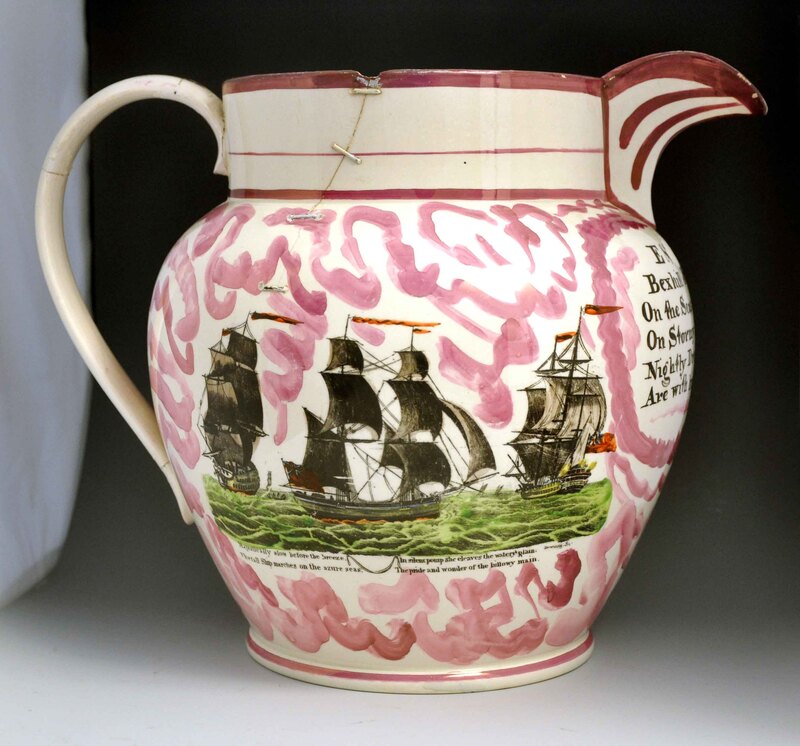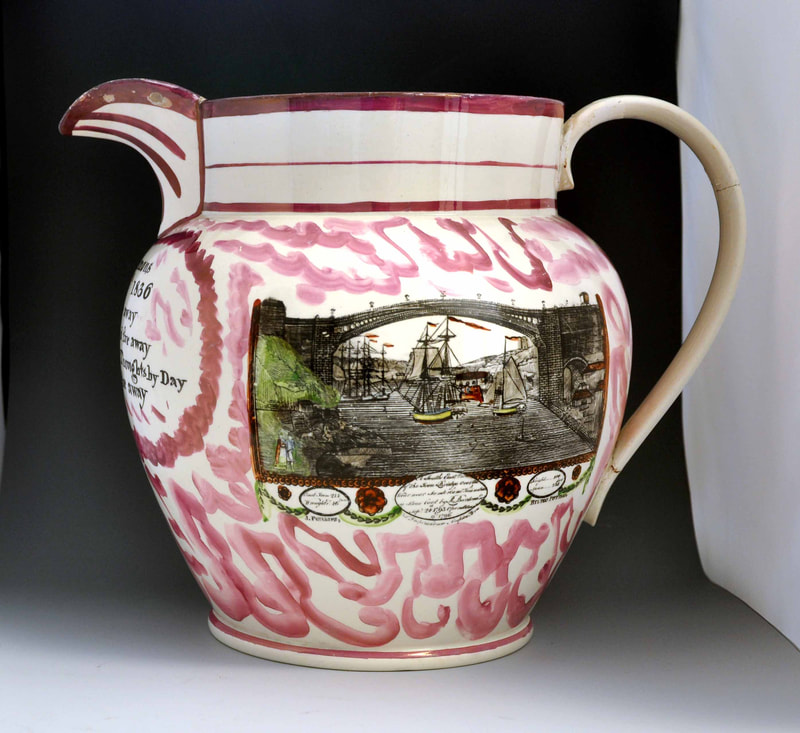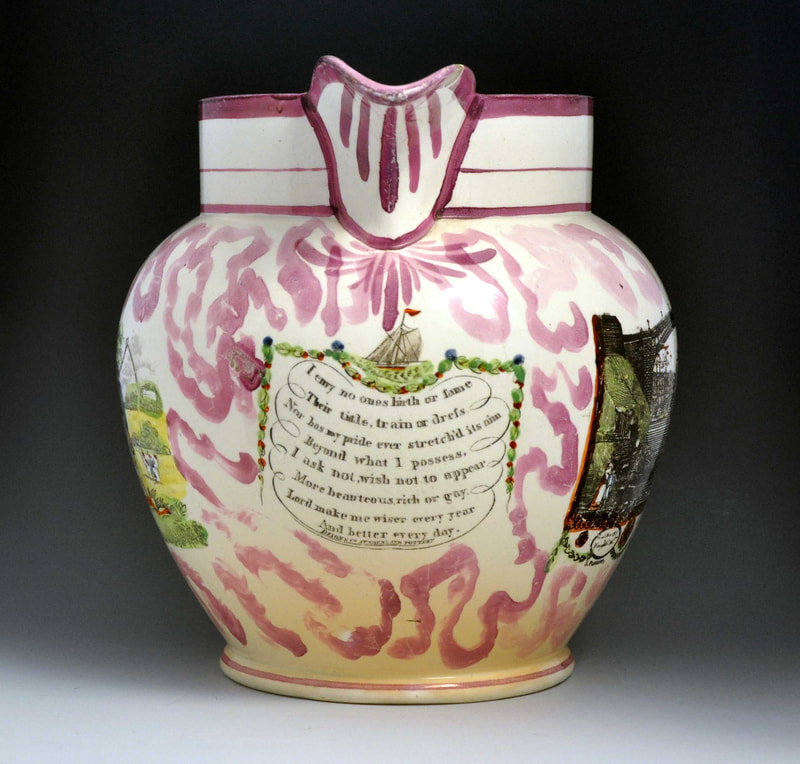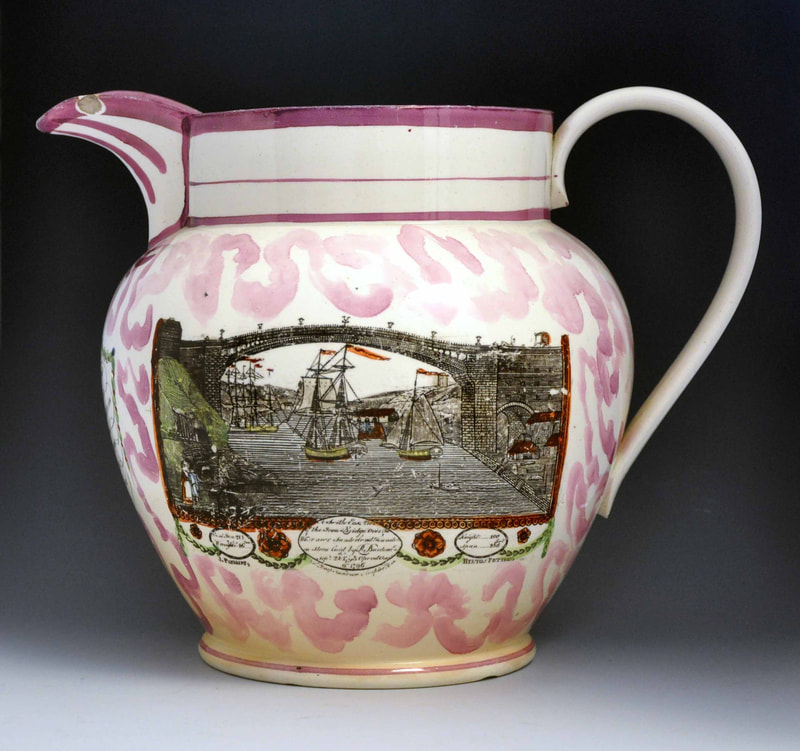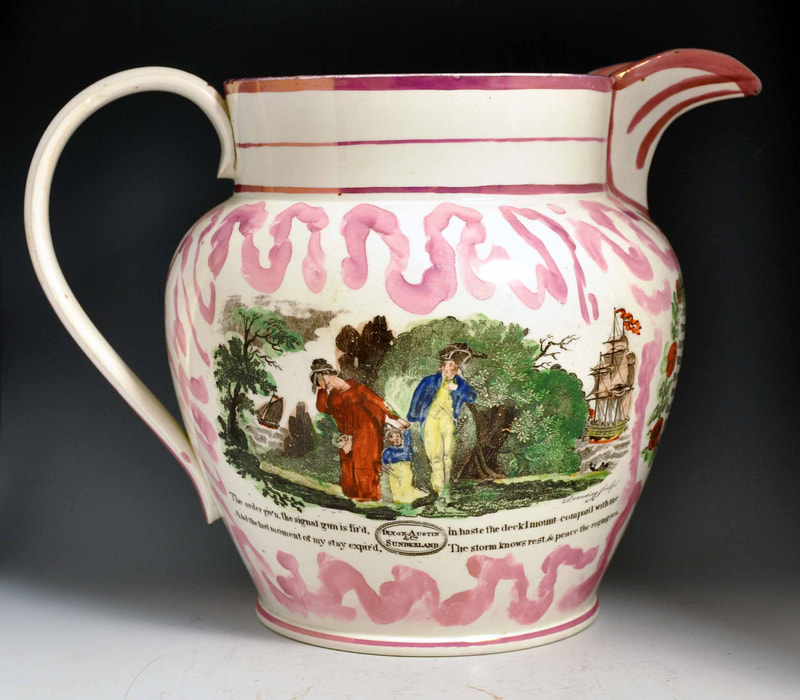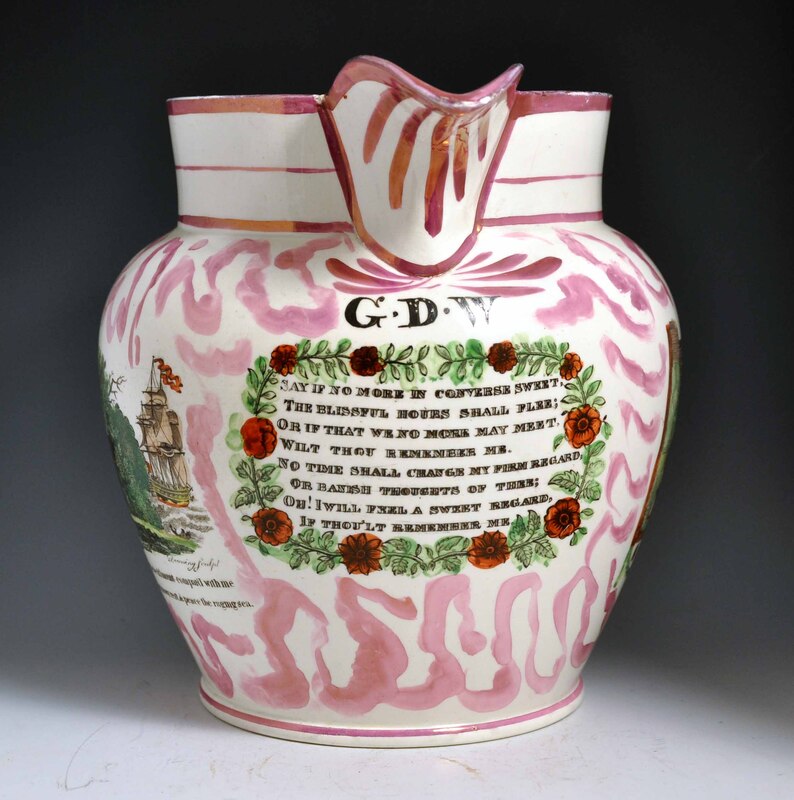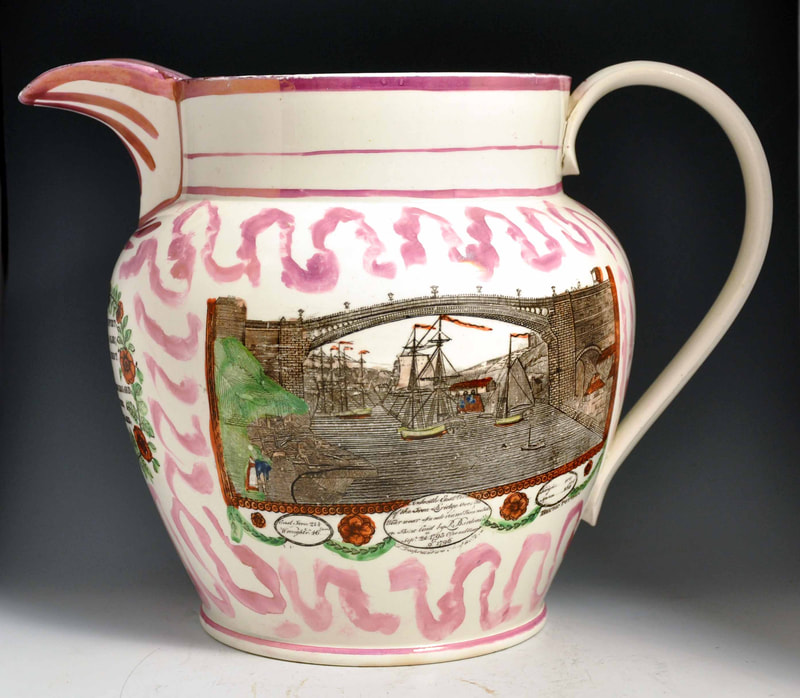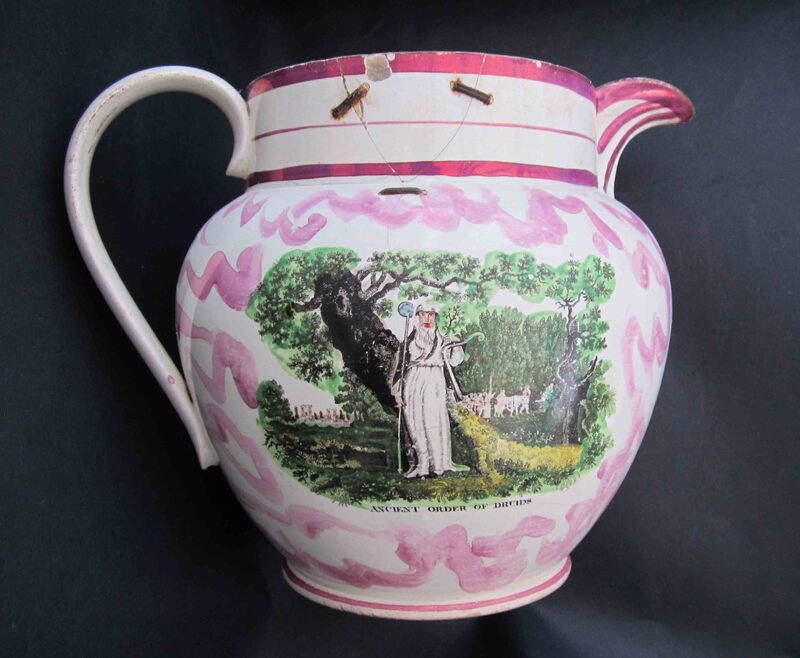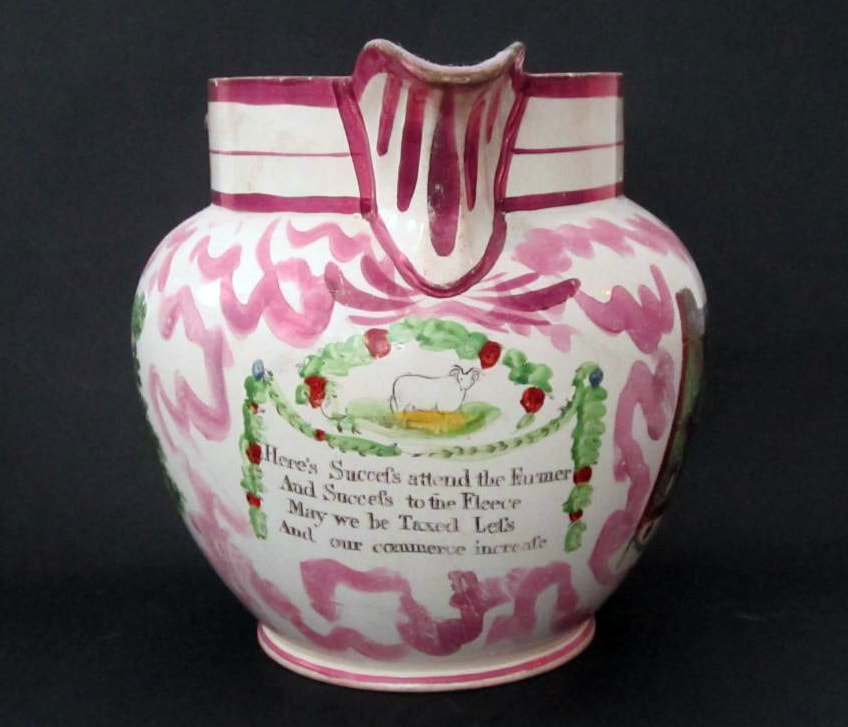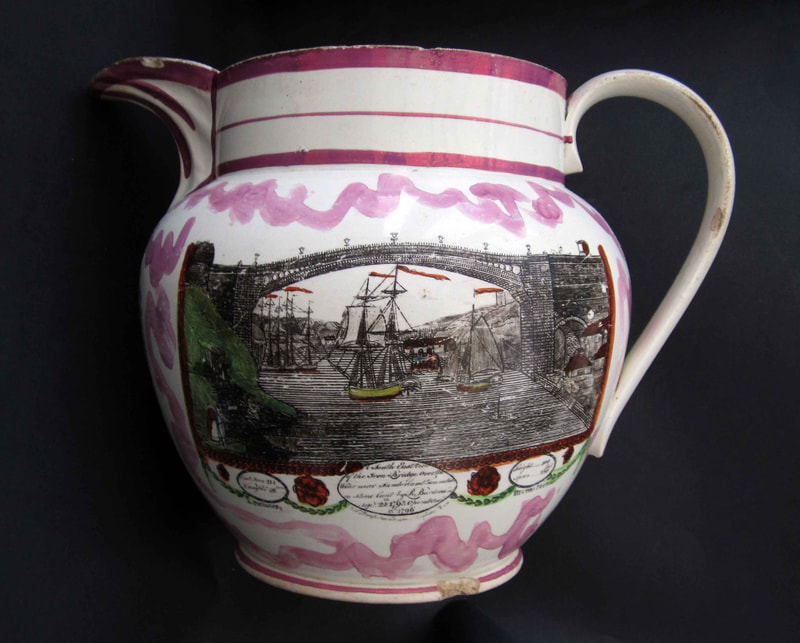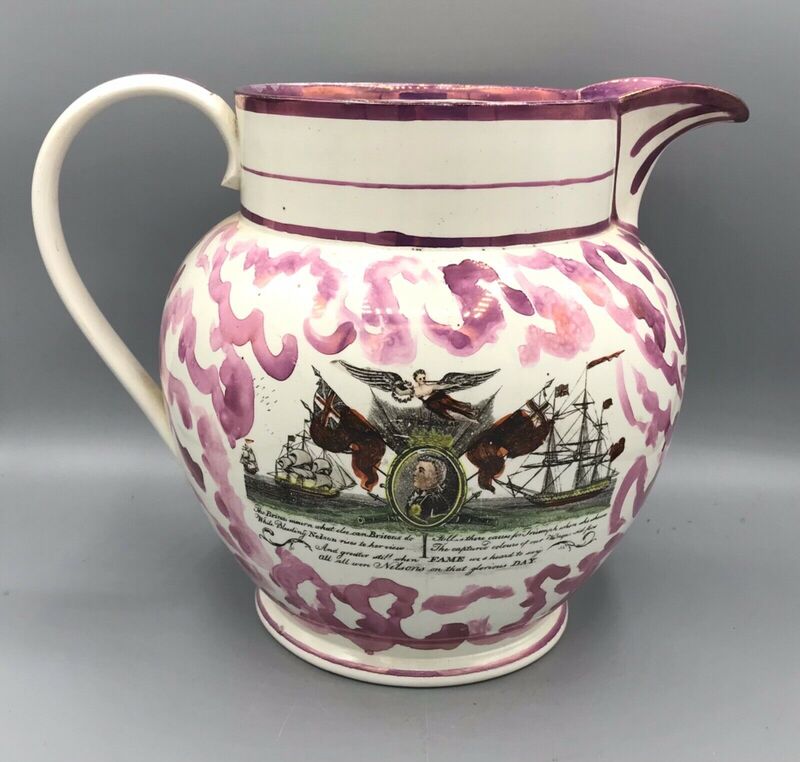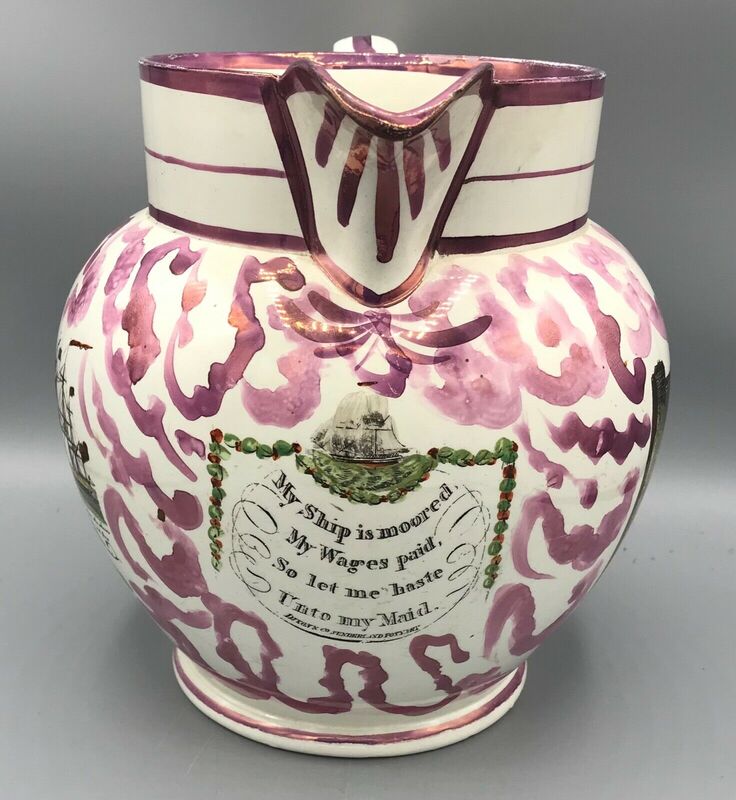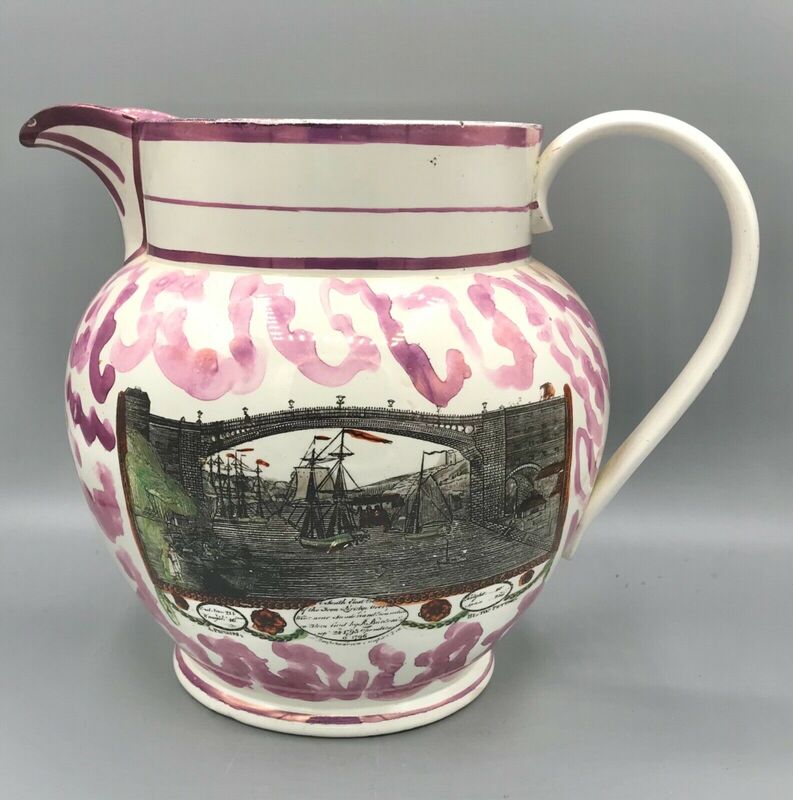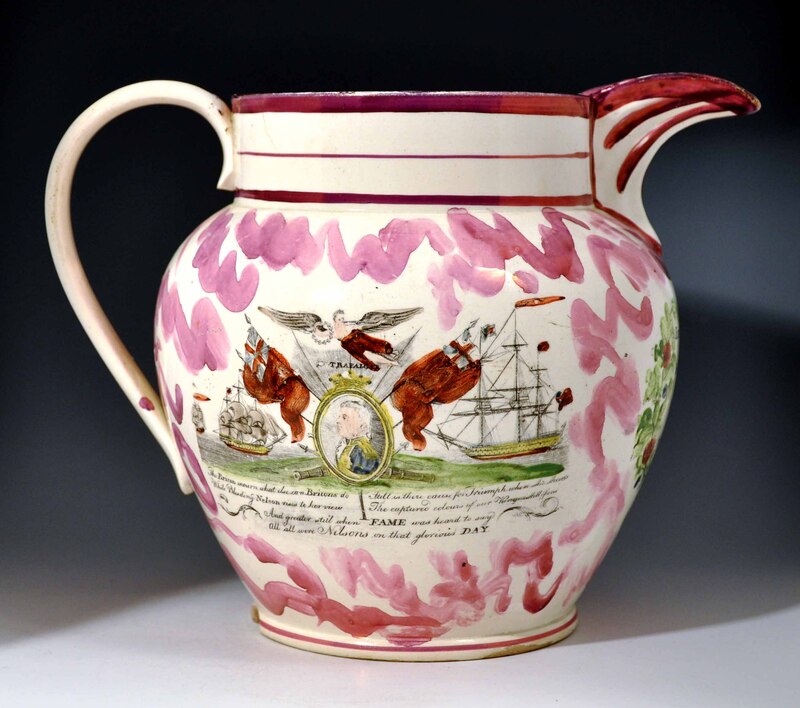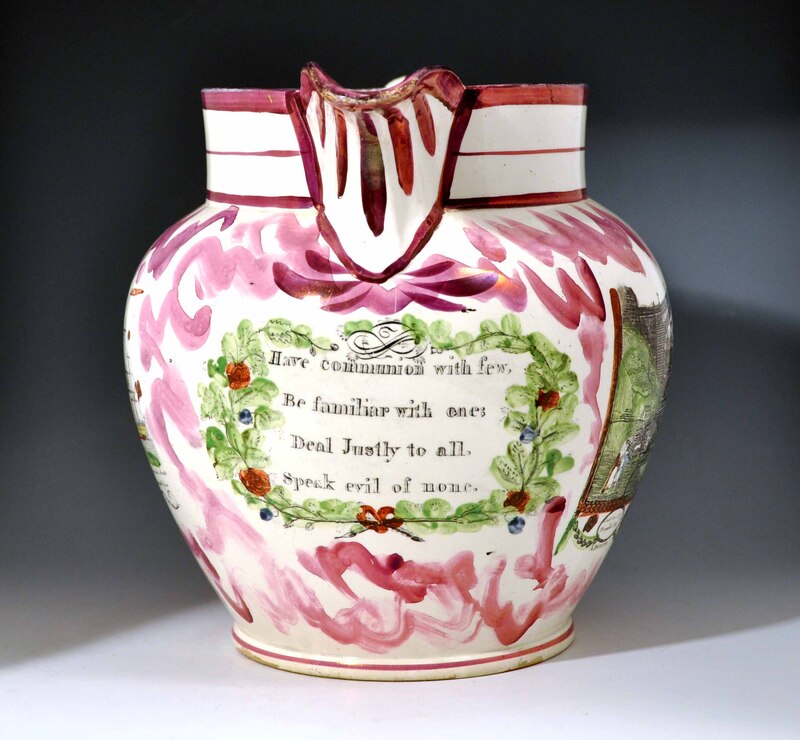South East View of the Cast Iron Bridge – bridge 3
Unknown pottery
This transfer is very similar to the Phillips' version below. However, note the reflections of the masts in the water to the left of the central ship. Also, the flowers on either side of the central title. On this example, the motto 'Nil Desprandum Auspice Deo', from Sunderland's coat of arms, can more clearly be seen. It broadly translates as 'Don't despair in God we trust'.
J Phillips, Sunderland Pottery
This transfer is an earlier incarnation of Baker's bridge 3, before the printed maker's mark, J Phillips, Hylton Pottery, was added (see below).
This jug was likely made before 1815, when the North Hylton Pottery was bought by John Phillips from the Maling family. Therefore, I've attributed it to Phillip's other pottery, the Sunderland (or Garrison) Pottery. However, it is possible that Phillips acquired this transfer plate as part of the North Hylton Pottery sale, and that the jug was in fact made by Robert Maling. That seems less likely to me as these copper plates were very valuable, and there is no obvious reason why Robert Maling wouldn't have taken it to his new pottery at Ouseburn Bridge.
This jug was likely made before 1815, when the North Hylton Pottery was bought by John Phillips from the Maling family. Therefore, I've attributed it to Phillip's other pottery, the Sunderland (or Garrison) Pottery. However, it is possible that Phillips acquired this transfer plate as part of the North Hylton Pottery sale, and that the jug was in fact made by Robert Maling. That seems less likely to me as these copper plates were very valuable, and there is no obvious reason why Robert Maling wouldn't have taken it to his new pottery at Ouseburn Bridge.
J Phillips, Hylton Pottery
A creamware mug with the re-engraved transfer with the added printed mark 'J Phillips' and 'Hylton Pottery' beneath it. Unlike the earlier mug above, it has a frog inside and likely date from the 1820s. This mug is of a larger size and has a larger version of the Dixon, red-eyed, frog (see below centre, beside a smaller frog for comparison).
Below, two very similar creamware mugs with the re-engraved transfer.
Although this bridge transfer bears the printed mark 'J Phillips' and 'Hylton Pottery', it appears in conjunction with transfers marked 'Dixon & Co' and 'Dixon, Austin & Co'. The date of 1836 on the large inscribed jug below, places it towards the end of the Dixon, Austin & Co partnership (1818–1839).
Below, the transfer on a smaller jug with the very rare transfer 'Ancient Order of Druids'. Beneath that, two examples with a transfer commemorating 'Nelson'. Given the similarities of decoration, it seems likely that all these items are from the 1830s. Interestingly, the Nelson examples I have on file from the 1820s are paired with bridge 14.
